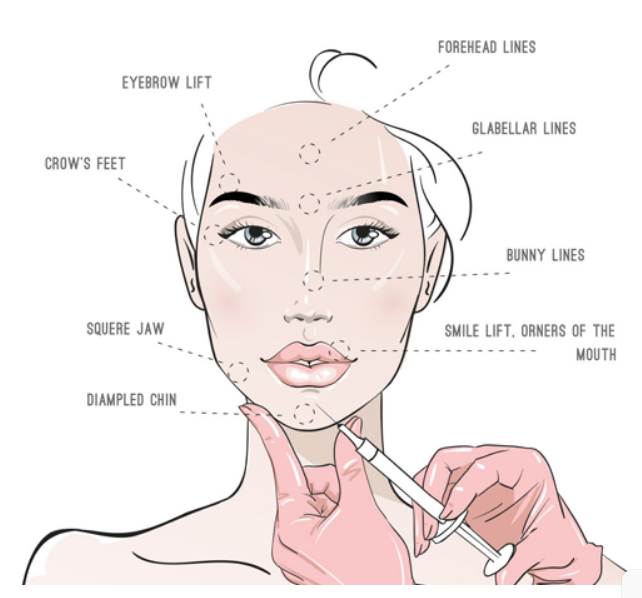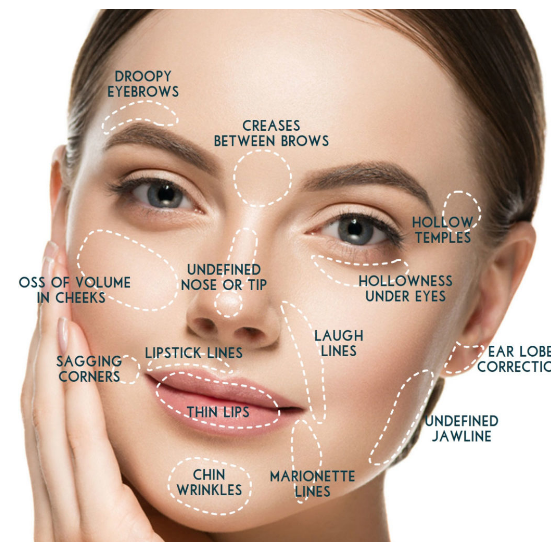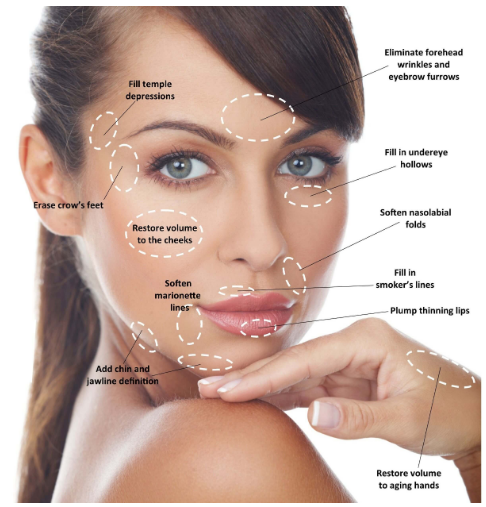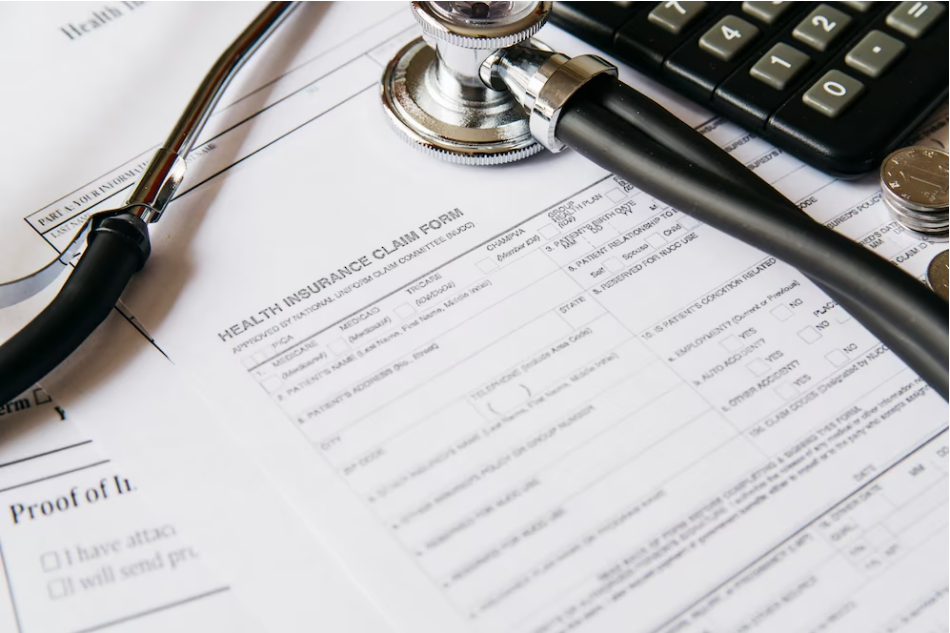How Much Does Under Eye Filler Cost?

The cost of under-eye filler can vary depending on the amount of filler used, the type of filler used, the specific goals of the patient and the amount of product needed to achieve the desired results, and the geographical location. However, on average, under-eye filler costs range from $600 to $1,200.
During your consultation, expert injectors will assess your unique needs and formulate a treatment plan to help you achieve your goals. They should also provide you with a free cost estimate so that you can make an informed decision about your treatment.
TELL ME THE BEST WAY TO PREPARE FOR YOUR APPOINTMENT.
You want to care for your appearance and look your best. One of the concerns you have is the under-eye area. You would like to know the best way to prepare for your appointment regarding under eye filler cost.
It is best to consult with an experienced aesthetician to discuss your concerns and goals. They will be able to evaluate your needs and recommend the best course of treatment. During your consultation, be sure to ask about the under-eye filler cost.
Preparation involves more than just the physical act of getting the injection. It is vital to understand the risks and benefits associated with the procedure. Be sure to ask your aesthetician about the cost of under-eye filler and what you can expect during and after the treatment.
EVERYTHING YOU NEED TO KNOW BEFORE GETTING UNDER EYE FILLER
Do you have bags under your eyes? and want to get rid of them once and for all? If you’re considering getting an under eye filler, you should know a few things before deciding.
First, choosing a reputable doctor with experience performing this procedure is crucial. Second, you’ll need to decide what kind of filler you want. Many fillers are available, so it’s essential to research and chooses the one that’s right for you.
Third, you’ll need to be prepared for the recovery process. After getting under-eye filler, you may experience some bruising and swelling. However, this should go away after a few days.
Lastly, you should know that under-eye filler is not a permanent solution. You must get touch-ups every few months to maintain the desired results.

UNDER EYE FILLER IS A SUREFIRE WAY OF GETTING RID OF PESKY UNDER EYE BAGS — AND THE PROCEDURE IS SURPRISINGLY EASY.
You can find a quick and easy way to get rid of under eye bags; look no further than under-eye filler. This cosmetic procedure is quickly becoming a popular way to achieve a more youthful appearance, and it’s not hard to see why.
Under-eye filler is a nonsurgical way to eliminate under-eye bags and give you a more refreshing appearance. The procedure is quick and easy and can be done in your home. You only need topical anesthesia and a dermal filler, such
as Restylane.
The procedure is simple: first, your doctor will numb the area with a topical anesthetic. Then, they will use a needle to inject the filler into the space beneath your eyes. The filler will plump up the area, filling in the bags and giving you a more youthful and refreshed appearance. The effects typically last up to a year and can be repeated.
After the filler is injected, you may experience some swelling, bruising, and tenderness at the injection site, but these should go away after a few days. For the best results, follow any aftercare instructions provided by your doctor, such as avoiding exercise and strenuous activities for at least 24 hours.
WHAT IS UNDER EYE FILLER?
Eye filler, or tear trough filler, is an injectable used to improve the appearance of dark circles or bags under the eyes. This type of filler is made of hyaluronic acid, a substance produces naturally occurs in the body. Eye filler is injected into the tear trough, the region between the lower eyelid and the upper cheekbone.
Eye fillers can help to improve and reduce dark circles or bags under the eyes. It can also help to reduce fine lines and wrinkles around the eyes. The results of eye filler are temporary, and the body will eventually metabolize the filler.
Under-eye filler is a relatively quick and easy procedure that can be done in the doctor’s office. The results of the process are immediate and can last for several months. There are minimal side effects associated with under-eye filler, and the procedure is relatively safe.
DO UNDEREYE FILLERS HURT?
Do undereye fillers hurt? You may be wondering if they hurt. The short answer is that some discomfort is involved with any injectable procedure. However, most people report that the sensation is manageable and tolerable.
Most people report only feeling a minor pinching sensation during the injection. To help ensure your comfort during the procedure, your doctor will use a fine needle, and a numbing cream applied to the area before injecting the filler. The filler contains a local anesthetic, which further helps minimize discomfort.
After the procedure, you may experience some mild swelling and bruising, but this typically goes away within a few days. You can help by applying ice to reduce swelling in the area and sleeping with your head elevated. Overall, most people report minimal discomfort after getting undereye fillers.
Fillers can be a great way to combat under-eye bags. The age at which you get under eye filler depends on many factors. These include the severity of your under eye bags, the thickness of your skin, and your overall goals for the treatment.

WHAT ARE THE SIDE EFFECTS OF UNDEREYE FILLERS?
Undereye fillers help reduce the appearance of dark circles and wrinkles. However, like all procedures, some risks and side effects are associated with undereye fillers.
The most common side effect of undereye fillers is bruising or swelling. This usually goes away within a few days. Other potential side effects include:
– Allergic reaction
– Infection
– Damage to blood vessels
– Blindness
– Lumps or bumps in the area
– Unevenness or asymmetry
– Discoloration of the skin
– Skin rash or irritation
– Irritation of adjacent nerves
– Scarring
– Swelling
– Pain
– Bleeding
– Temporary numbness
However, these side effects are usually for a limited time and resolved within a few days. Choosing a reputable provider with sterile needles and experience performing this procedure is vital to minimize the risk of side effects.
WHAT HAPPENS DURING THE PROCEDURE?
Patients considering under-eye fillers are often curious about what happens during the procedure. The under-eye area is delicate and requires a skilled and experienced hand to inject the filler material.
During the procedure, the filler material is injected into the under-eye area with an excellent needle. The material is then carefully distributed beneath the skin to achieve the desired results. The entire process usually takes less than 30 minutes, and the results are immediate.
You may be a good candidate for undereye filler. This minimally-invasive procedure can help to restore a youthful appearance by adding volume to the under-eye area. Fillers are made from hyaluronic acid, which occurs naturally in the body. Side effects are usually mild and temporary, including bruising, swelling, and redness.

HOW MUCH DOES UNDEREYE FILLER COST?
The cost of undereye filler can vary depending on the type used, the amount needed, and the geographical location. The average price of an undereye filler is $600 to $1,200 per syringe.
Generally, a syringe of hyaluronic acid filler is less expensive than a syringe of poly-L-lactic acid filler. The cost is also affected by the physician’s experience, geographic location, and the type of filler chosen.
However, the under-eye filler cost is one of many costs associated with the procedure. There are other costs associated with the process, such as the cost of the anesthesia, the cost of the facility, the cost of the surgeon, and the cost of post-operative care.
A publication by the American Society of Plastic Surgeons reported that the average cost of undereye filler in 2018 was $1,484. This is a significant increase from the average of $819 in 2017. The price increase is likely due to the demand for this procedure.
HOW TO PREPARE FOR THE PROCEDURE IF YOU'RE GETTING AN UNDER EYE FILLER?
First, you’ll need to consult a dermatologist or plastic surgeon to see if you’re a good candidate for the procedure. They will evaluate the area around your eyes and determine if you have any under-eye hollows that could be corrected with filler.
Once you proceed with the procedure, you must choose a filler material. A few options are available, and your doctor will help you choose the best one based on your goals and needs.
Next, you’ll need to schedule a time for the procedure. It’s essential to choose a time when you can take it easy for a couple of days following the process to give yourself time to heal.
You should also avoid alcohol for at least 24 hours beforehand. Before the procedure, you should clean your face and remove all makeup. It’s also essential to avoid eating or drinking for at least an hour before the procedure. During this time, your doctor can answer any questions about the process.
Finally, you’ll need to prepare for the procedure itself. Depending on the filler material you’ll be using, you may need to stop medications or stop using aspirin or ibuprofen, which are blood thinners, for one week before the procedure or be required to take antibiotics before the procedure.
TELL ME THE DOWNTIME OF UNDEREYE FILLERS.
There needs to be a quick response to the downtime question for undereye fillers. However, the consensus is that this procedure has minimal downtime. Most people report slight bruising and swelling after the process, which typically subsides within a few days.
Additionally, most people report returning to their usual selves within a week or two of receiving under-eye fillers. However, it must be noted that everyone’s body heals differently, so some may experience more extended recovery.
However, based on the average person’s healing process, taking between two and four weeks off from work or other strenuous activities following under-eye filler injections is generally advisable. During this time, it is recommended that the person allow the area to heal and rest as much as possible – avoiding strenuous activities and keeping the area cool, clean, and moisturized.
It may also be helpful to use cold compresses to reduce any swelling. After four weeks, the person should be able to return to regular activities, although following their doctor’s aftercare instructions is essential.

IS UNDEREYE FILLER A GOOD OPTION?
When it comes to facial fillers, if you’re considering getting undereye filler, you might wonder if it’s safe. After all, injecting anything into your skin can be worrisome. But the good news is that undereye filler is a safe procedure with few risks.
The most common side effect of undereye filler is bruising. This usually goes away within a few days and can be covered with makeup. Other rarer side effects include infection, swelling, and redness. However, these are usually mild and temporary.
The fillers can plump the skin under the eyes and smooth any wrinkles or lines. The procedure results are typically temporary but can last several months.
TELL ME THE DIFFERENCE BETWEEN DERMAL FILLERS
Many different types of dermal fillers are available on the market, each with benefits and drawbacks.
The most popular dermal fillers or soft tissue fillers are made from hyaluronic acid, which naturally occurs in the body. Hyaluronic acid fillers are typically used to improve the appearance of wrinkles and fine lines. Other dermal fillers are made from collagen, a protein that helps support the skin. Collagen fillers are often used to plump the skin and add volume to the face.
Dermal fillers are not permanent treatments; the results typically last six months to a year. After that, another remedy will be necessary to maintain the results.
THE FINAL WORD
Dermal fillers are designed to restore volume and fullness to the skin. They can improve the appearance of wrinkles, fine lines, nasolabial folds, Marionette lines, smoker’s lines, and other types of facial wrinkles and lines. In addition, dermal fillers can add volume to the cheeks, lips, and other facial areas.
Under-eye fillers are dermal fillers specifically designed for use in the delicate under-eye area. They are injected into the tear trough, the location of the lower eyelid that extends.
So, what’s the difference between dermal fillers and under-eye fillers? Dermal fillers are generally used to describe any filler injected into the skin. In contrast, under-eye fillers refer to fillers injected into the tear trough.

IS UNDEREYE FILLER SAFE?
There is no doubt that appearance matters. Today’s world is constantly bombarded with images of perfect-looking celebrities and models. This can create a lot of pressure to look perfect, leading some people to resort to extreme measures to achieve their desired look.
One of the latest trends in the beauty world is undereye filler. This cosmetic procedure involves injecting filler into the area under the eyes to create a smoother, more youthful appearance. But is this trend safe?
As with any injectable cosmetic treatment, there are risks involved with undereye filler. The most common side effect of undereye filler is bruising, which can usually be resolved within a week or two. Other potential side effects include infection, swelling, and temporary vision problems.
Depending on your desired results and other factors, your surgeon may suggest an injectable filler, laser treatments, or other procedures; there are a variety of opinions on its safety. For example, the consensus is that hyaluronic acid injections are relatively safe for improving the appearance of your dark circles and wrinkles.
Recent research in the New England Journal of Medicine shows that undereye fillers are safe and effective. The study followed 600 patients for two years and found no serious adverse side effects.
Additionally, the fillers effectively reduced the appearance of dark circles and wrinkles. These results suggest that undereye fillers are a safe and effective option for reducing the appearance of aging.
HOW DOES UNDEREYE FILLER COMPARE TO BOTOX?
Many people turn to Botox and fillers in search of a youthful appearance. So how are these two different from one another popular treatments?
A neuromodulator called Botox is injected into the muscles to relax them and reduce the appearance of wrinkles. Conversely, fillers are injected into the skin to plump it up and fill in wrinkles.
Botox and fillers can be used to achieve a similar goal: reducing wrinkles and giving the face a more youthful appearance. Nonetheless, there are some similarities between the two treatments. Here’s a quick rundown of how they compare:
Botox vs. Fillers:
-Botox is a muscle relaxer, while fillers plump up the skin
-Botox lasts 3-6 months, while fillers last 6-12 months
-Botox is used to treat wrinkles caused by movement, while fillers are used to treat static wrinkles and lines
-Botox is injected directly into the muscle, while fillers are injected into the skin
-Botox is more affordable than fillers
-Botox has few side effects, while fillers may cause more side effects, such as bruising, swelling, and redness
-Botox can’t be used to treat deeper wrinkles, while fillers can fill in deeper wrinkles.
-Botox acts as an anti-wrinkle treatment by paralyzing the muscles in the area. At the same time, fillers are physical substances injected into wrinkles to plump them up and make them appear full.
What is your best option? Fillers or Botox? The answer is to take into account one’s individual needs and goals. The filler is better if you want a temporary treatment with minimal side effects.
One of the critical differences between filler treatments and Botox is the area they target and how long each treatment lasts. Fillers are injected directly into the facial tissue to fill any hollowness or wrinkles. Fillers are used to adding volume and contour to the face.
On the other hand, Botox is injected directly into the facial muscles to prevent them from contracting and creating wrinkles. Botox typically lasts around six months but can vary from person to person.
In terms of cost, Botox and fillers are relatively similar. They both range from $400 to $600 per treatment session. However, the longevity of results can vary significantly between the two treatments.

WHO SHOULD AVOID DERMAL FILLERS?
Patients with a history of keloid formation or currently taking isotretinoin (Accutane) should avoid dermal fillers. Patients with active skin infections, inflammation, or open wounds should avoid dermal fillers.
However, some people should avoid this treatment, including those with active acne, rosacea, or other skin conditions. Additionally, women who are expecting or breastfeeding should avoid dermal fillers.
This question has no definitive answer, as more evidence must be provided. Some doctors believe that fillers are safe when used in small amounts and the hands of a skilled practitioner, while others believe that the risks outweigh the benefits. Other options for reducing under-eye bags’ appearance include lifestyle changes, home remedies, and over-the-counter products.
TELL ME THE IMPORTANCE OF AFTERCARE
Aftercare following any medical procedure is vital to achieve the best possible results and minimize the risk of complications. However, following the proper aftercare protocol is crucial after having under-eye filler injections.
The skin around the eyes is very fragile and, as a result, can be more susceptible to bruising and swelling. In addition, the injection sites are very close to the tear ducts, meaning there is a greater risk of infection if the area is not kept clean.
For these reasons, following the aftercare instructions given to you by your doctor or nurse is essential. These instructions usually include avoiding rubbing or touching the injection sites, using ice packs to reduce swelling, and avoiding makeup or contact lenses for some time.
While dermal fillers can provide impressive results, it’s important to remember that they are not a “quick fix.” Aftercare is integral to the process and will help you maximize your results and minimize potential side effects.
THE UNDER EYE FILLER PROCEDURE
The under-eye filler procedure is a quick and relatively painless way to address the issue of under-eye bags and dark circles. This article will briefly overview the under-eye filler procedure, including what to experience before, during, and after the procedure.
Before the procedure, the area around the eyes will be numbed with a cream or gel. Then, the filler material will be injected into the area under the eyes. The filler will add volume to the area and help to reduce the appearance of under-eye bags and dark circles.
The procedure takes less than 30 minutes to complete, and you will be able to see results immediately. After the process, there may be a little bruising and swelling, but this should go away soon.
Under-eye filler is a relatively quick and easy way to appear youthful. The results are immediate and can last for up to a year. There are a few potential side effects, such as bruising and swelling, but these are typically short-lived and resolve quickly.

HOW LONG DO UNDEREYE FILLERS LAST?
If you’re considering getting undereye fillers, how long do they last? The answer depends on varieties, including the type of filler used, the amount injected, and your skin metabolism.
On average, most people can expect their undereye fillers to last for six to nine months. However, some may see results lasting up to a year or more, depending on the type of filler used and the individual’s skin type.
While fillers can provide long-lasting results, they are not permanent. Over time, the body will gradually break down the fillers, and touch-up injections may be necessary to maintain results. However, for many people, the temporary results are worth the cost and effort of getting the injections to have smooth, youthful skin!
For optimal results, it is strongly recommended that under-eye filler injections be administered by a qualified dermatologist or facial plastic surgeon with comprehensive experience in the field.
BEFORE THE PROCEDURE BEGINS
Before the procedure begins, the area will be prepped with a numbing cream. Once the numbing cream has been applied, the filler will be injected into the area with a fragile needle.
The filler is made of hyaluronic acid, naturally occurs in the body. This type of filler is temporary and will last for about six months.
After the filler has been injected, the area will be gently massaged. The downtime for this procedure is usually minimal, and you can expect to see results immediately. Before you decide to get dermal fillers, it is vital to understand the procedure’s potential risks and side effects. It is also essential to have realistic expectations about the results of the process.
DURING THE PROCEDURE
The tear trough is the section under the eyes that can become hollow with age, causing shadows and a tired appearance. Tear trough fillers are a nonsurgical way to improve the appearance of this area by adding volume.
They are most commonly made of hyaluronic acid, which occurs naturally in the body. This type of filler is temporary and usually lasts about six to nine months.
Tear trough fillers are injected into the skin under the eyes. The procedure is relatively quick, taking about 15 to 30 minutes. There is usually no downtime, and you can resume your normal activities immediately.
Based on the research by the Journal of Cutaneous and Aesthetic Surgery, medical research statistics show that during the procedure, tear troughs are associated with a decrease in wrinkle depth, an increase in skin elasticity, and a reduction in the appearance of dark circles under the eyes. These results indicate that tear trough injections effectively treat wrinkles and dark circles under the eyes.
AFTER THE PROCEDURE
After you have had your under-eye fillers injected, there are a few things that you must do to ensure that the area is healing correctly.
First and foremost, you need to sleep on your back with your head raised for at least the first 24 hours. This will help to reduce any swelling that may occur. You should also avoid lying down or resting your head on your hands for at least 4 hours after the procedure. This will again help to reduce any swelling.
It is also important to avoid rubbing or pressing on the area for at least 48 hours. This can cause the filler to become displaced. There is also a small risk of infection. Overall, injectable fillers are a safe and effective way to improve the appearance of the under eye area.